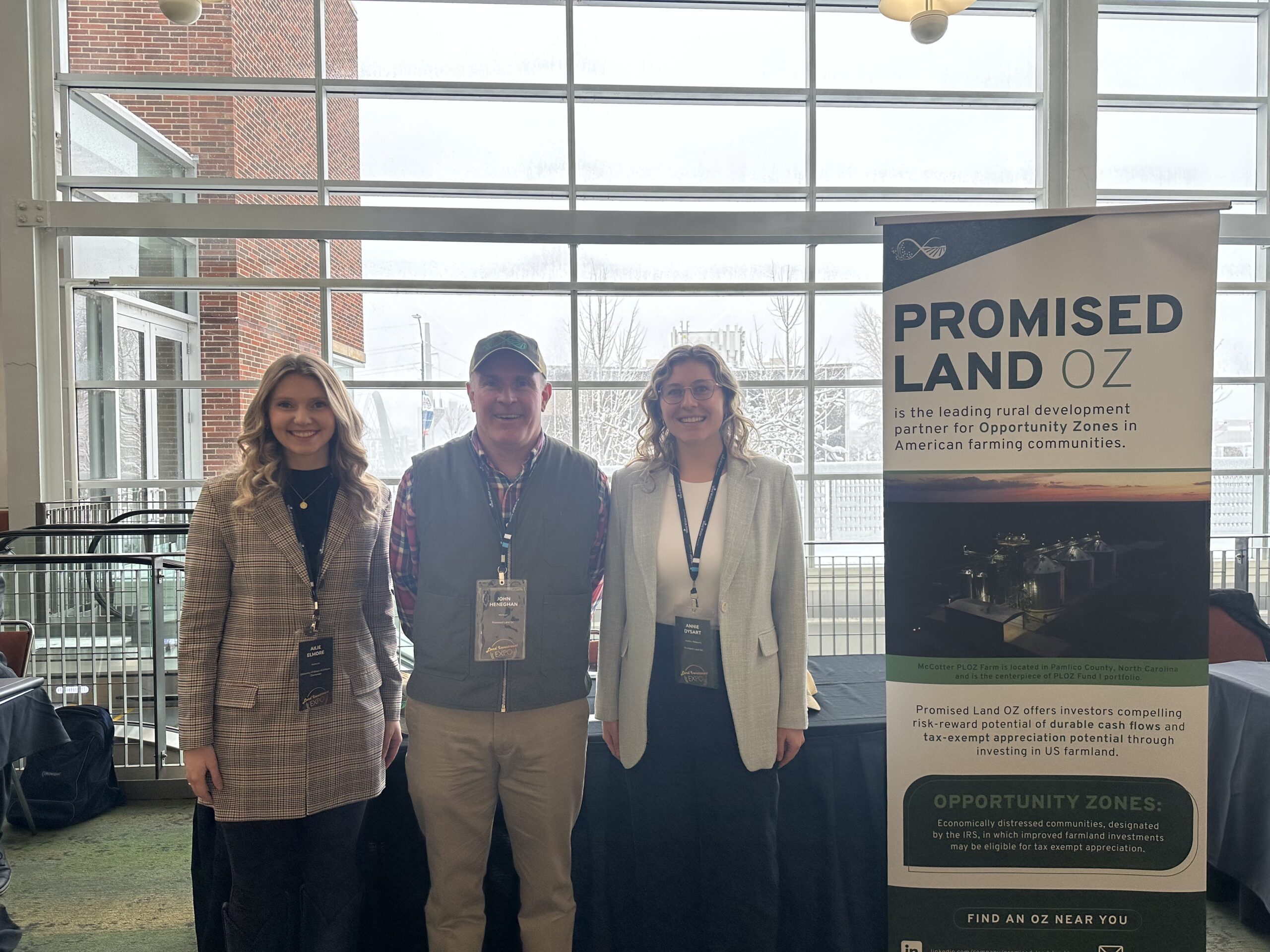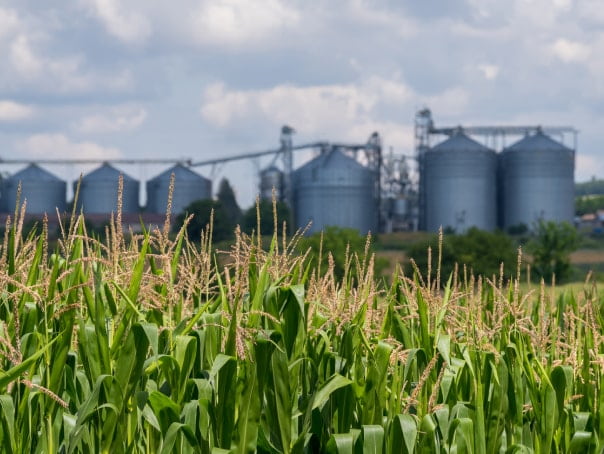Farmer’s Daughter’s Harvest Update

The rumble of the combine going through the field, the flutter of dust and debris through the air, and long hours spent working the same land that my family has farmed for 5 generations are all signs of my favorite time of year, Harvest. Fall is such a special time of year for me as students return to my classroom at the University of Illinois at Urbana-Champaign and the promise of another harvest season comes to fruition. I spent my childhood on the floor of a combine or tractor playing with my miniature versions of equipment and taking the best cab naps while my father, grandfather, and great uncle worked tirelessly to provide for our family. At fifteen, my brother went off to college at the University of Illinois giving me my first opportunity to truly be an active part of the farming operation. That year I learned to drive the combine and have spent every fall since behind the wheel of a John Deere Combine or a grain cart. While my grandfather and great-uncle have since passed, it is incredibly special to me to get to continue my family’s farming legacy while also educating the next generation on the importance of food and agriculture and sustainable farming practices.


United States Harvest Progress and Supply and Demand Estimates
Elmore farms finished up harvest in the middle of October while several farm operations in Illinois are still wrapping harvest up this month. We were blessed with adequate rain and growing conditions correlated to strong yields however not every farmer in the U.S. has been quite as lucky. Unfortunately, parts of Iowa, Kansas, Nebraska, and the Southern part of the U.S. have been facing an intense drought affecting crop yields in these areas. These areas have been plagued with extreme drought the past few years meaning crop yields in these areas have been unsatisfactory for multiple years. As of November 6th, the USDA reports that the top 18 corn producing states are 81% complete while soybean harvest in those states is 91% complete. Most farmers in the Midwest should be finished by the time the turkey is cut on Thanksgiving Day.

The United States Department of Agriculture (USDA) released its November World Agricultural Supply and Demand Estimates on November 9th showing slightly improved yields from last year with an average yield of 174.9 bushels/acre compared to 173.0 bushels/acre last year. On the soybean side, yields remain similar with a projected U.S. average of 49.9 bushels/acre compared to 49.6 bushels/acre last year. On the demand side of the equation, supply is currently rising more than demand as foreign corn production is forecasted higher in Ukraine, Russia, Burma, and Paraguay. The ongoing conflict in Russia and Ukraine had an initial strong impact on global corn markets as Ukraine has historically been a large supplier of commodities for the rest of Europe. However, as the conflict persists, markets have adjusted shifting to strong dependence on South America’s growing production. USDA concluded in August of 2023 that Brazil overtook the United States as the world’s leading corn exporter. Brazil is already on the podium as the largest soy exporter with much of its demand meeting China’s growing commodity needs. The United States is allocating more of its share of corn production towards growing domestic biofuels and vegetable oils while exports are lower. The world’s shift toward more biofuels and larger food production continues to reflect a strong future for U.S. agriculture.
Farmland Markets Update
In August, our farmland values update showed that farmland values in the United States remained strong with US farmland appreciating 8.1% on average from 2022 to 2023. Transactions have started to slow recently, and prices are starting to level off in some areas of the U.S. Some economists believe we may be in for a correction in farmland values. Farmland values are determined by a variety of factors with one of the main drivers being farm incomes and cost of capital considerations. 2021 and 2022 were record years for farm income as strong commodity prices boosted farmer returns which in turn put upward pressure on farmland values. However, 2023 incomes are not looking quite as strong. Growing input prices made planting commodities more expensive while commodity prices have declined from peaks in 2021 and 2022. While net farm income is projected to back off from a peak in 2022, it is still projected to remain modestly above the 20 year averages for net farm income and net cash farm income.


The other factor impacting farmland values are changes in interest rates. Interest rates have remained relatively low since the mid-1980s making financing options in farmland relatively cheap and putting upward pressure on farmland markets. The figure below shows how the current return to farmland typically tracks with the ten-year contact maturity treasury rate. However, times of extreme interest rate hikes tend to have an adverse impact on farmland values. As the Federal Reserve fights to control inflation through interest rate hikes, it has become more expensive to finance farmland purchases for farmers and investors alike. If the FED continues to raise rates, it will likely put downward pressure on farmland values. However, recent inflation numbers suggest price pressure for consumers is starting to abate suggesting the FED’s interest rate hikes may have come to an end.
Opportunity Zone Legislation Update
Since the inception of the Opportunity Zone (OZ) legislation from the Tax Cuts and Jobs Act of 2017, low-income communities designated as OZ’s have seen an influx of capital moving in to help boost local economies and revitalize life for people living in these areas. On September 27th, legislation titled the Opportunity Zones Transparency, Extension, and Improvement Act was introduced to the house by Representatives Mike Kelly and Dan Kildee along with Representatives Carol Miller and Terri Sewell. The legislation is aimed at strengthening the Opportunity Zones policy with more reporting and measuring requirements while expanding incentives to invest in these areas. The legislation aims to reinstate the program and establish a State and Community Dynamism Fund to support public and private investment in qualified opportunity zones. The Economic Innovation Group released a full report with a summary of the legislation here. The legislation has yet to move forward as the House is still backlogged from weeks of trying to find a new Speaker of the House. However, we are hopeful that legislation will be passed within the next year given its broad, bipartisan support.
Final Thoughts
Harvest time for me is always a time of reflection of where we have been and where we are going. At the start of each year there is uncertainty about the prospects of the new year’s harvest and what the future of agriculture looks like. Every person involved in agriculture has their perspective of what the future looks like for the food and agriculture industry. For me, the future of agriculture is visible in my own classroom among the faces staring back at me each day. I am constantly reminded of the bright future agriculture has, seeing young minds so energized to take on issues like food insecurity, environmental concerns, and continued profitability and innovation within the industry. In my mind, agriculture remains one of the safest asset classes as traditional food and fiber will be an essential part of our needs as long as humans roam the Earth. Some see alternative food sources such as insects and worms as the future however I do not foresee providing much competition to traditional large-scale farm production as the consumer’s mindset towards these protein sources is largely still dismissive.
In high school, I spent much of my time participating in my school’s FFA (formally known as the Future Farmers of America) chapter where at each meeting we would recite the organization’s creed. I still look at it from time to time to remind me why I do what I do and why there are many, many like-minded farming families across rural America working to ensure the success of the U.S. Agricultural Industry.
The FFA Creed
I believe in the future of agriculture, with a faith born not of words but of deeds – achievements won by the present and past generations of agriculturists; in the promise of better days through better ways, even as the better things we now enjoy have come to us from the struggles of former years.
I believe that to live and work on a good farm, or to be engaged in other agricultural pursuits, is pleasant as well as challenging; for I know the joys and discomforts of agricultural life and hold an inborn fondness for those associations which, even in hours of discouragement, I cannot deny.
I believe in leadership from ourselves and respect from others. I believe in my own ability to work efficiently and think clearly, with such knowledge and skill as I can secure, and in the ability of progressive agriculturists to serve our own and the public interest in producing and marketing the product of our toil.
I believe in less dependence on begging and more power in bargaining; in the life abundant and enough honest wealth to help make it so–for others as well as myself; in less need for charity and more of it when needed; in being happy myself and playing square with those whose happiness depends upon me.
I believe that American agriculture can and will hold true to the best traditions of our national life and that I can exert an influence in my home and community which will stand solid for my part in that inspiring task.
The creed was written by E.M. Tiffany and adopted at the Third National FFA Convention. It was revised at the 38th and 63rd Conventions.




